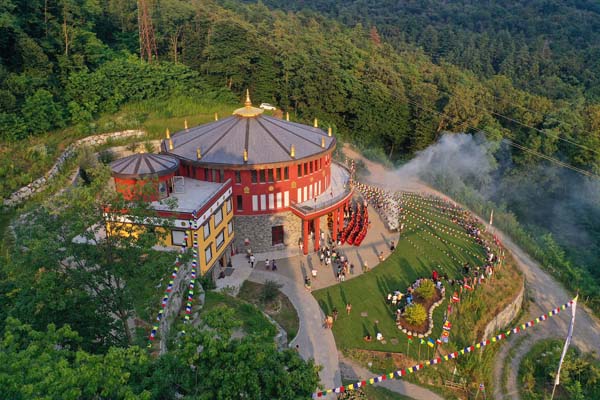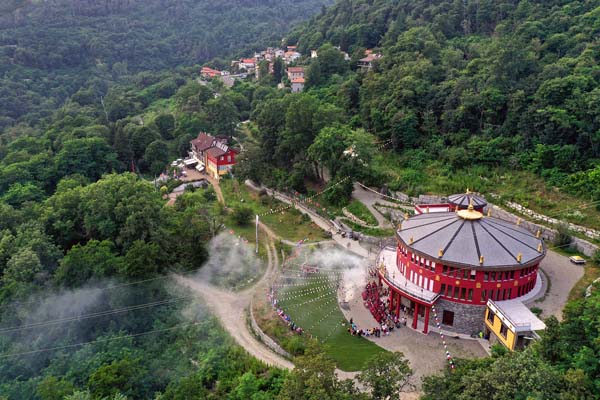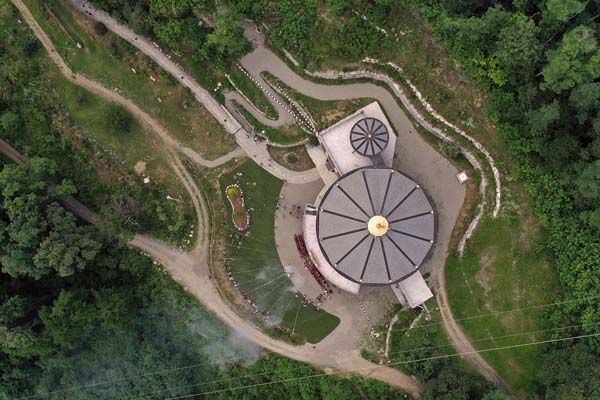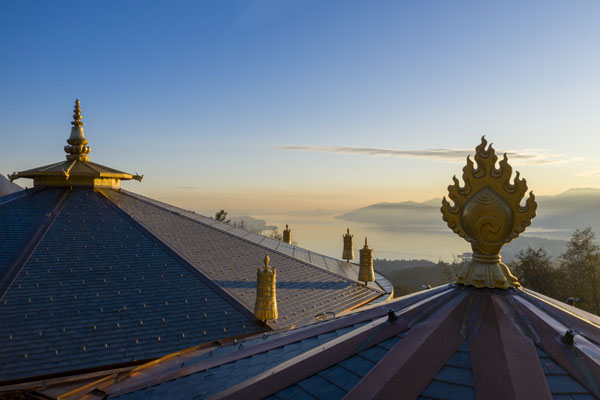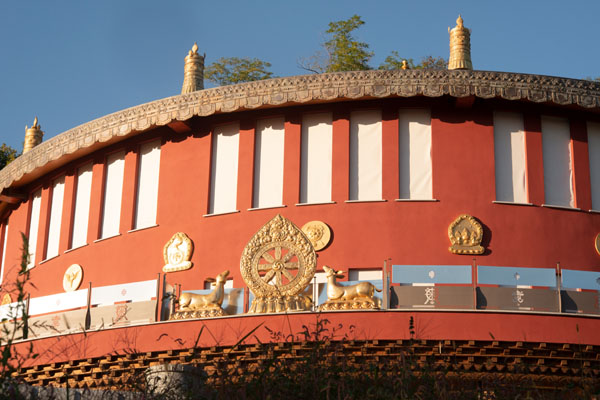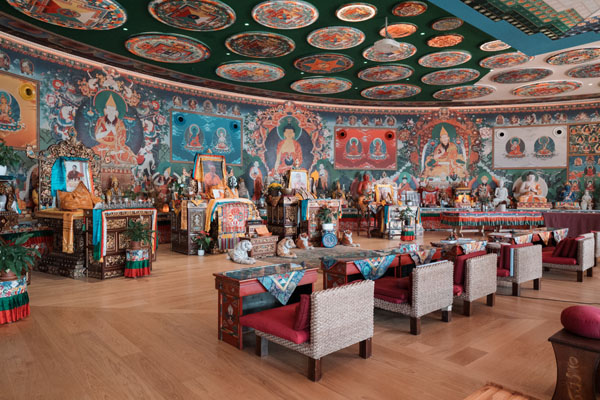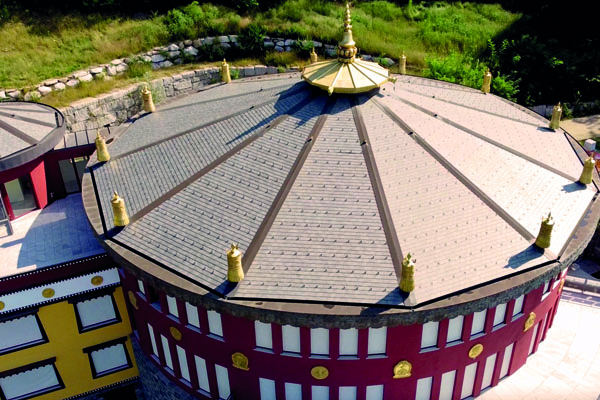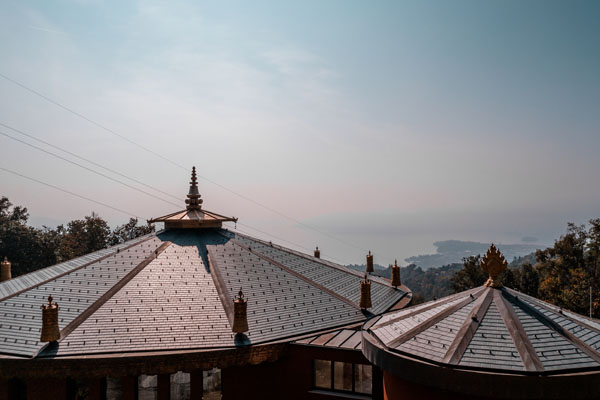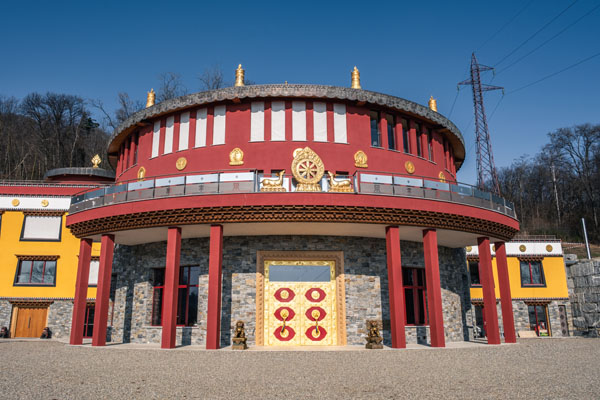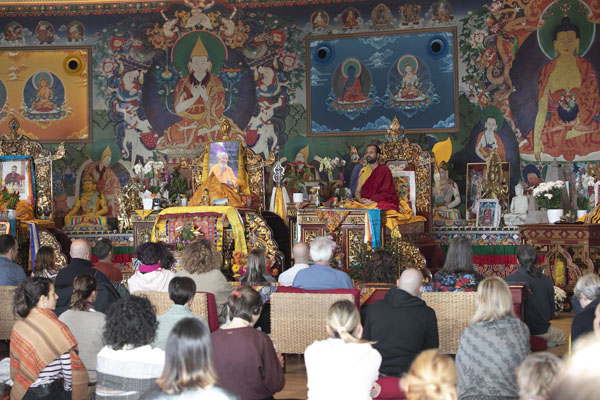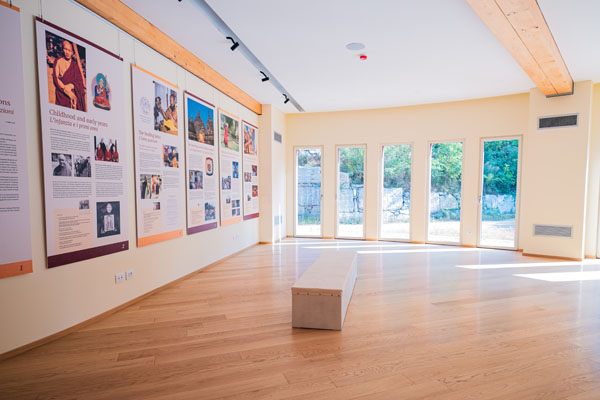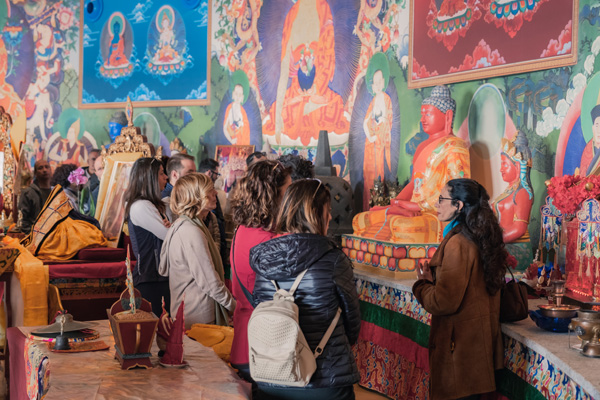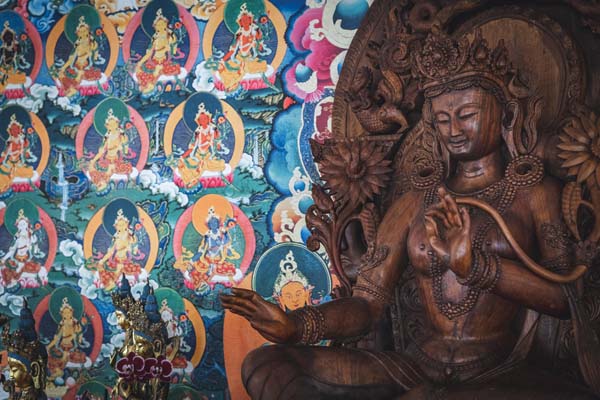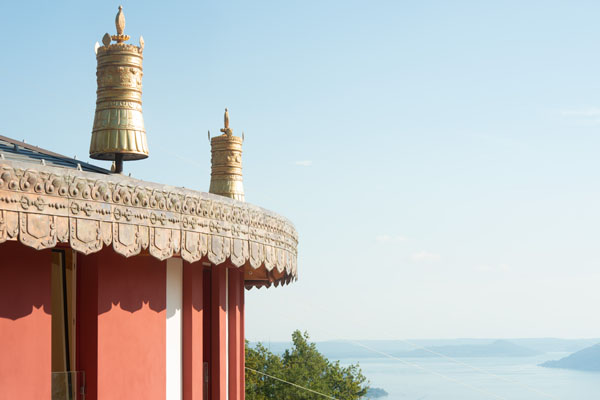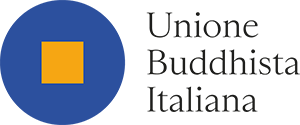Borobudur
Temple of Heaven on Earth
“In Albagnano, I want to create a sacred place, a place that — through receiving a special blessing — helps us to practise the spiritual path and awakens our inner purity”
T.Y.S. Lama Gangchen Rinpoche
Rising up from the roof are the twelve victory banners called gyaltsen — decorative metal cylinders that contain precious substances, rolls of mantra and incense. These gyaltsen, representing victory over ignorance, egoism, hatred, dissatisfaction and other ‘mental poisons’, are traditionally used to protect the environment and spread blessings in all directions.
On the pinnacle of the roof is the impressive genjira, which symbolises the ultimate goal of the Temple: the development of one’s own qualities and the realisation of inner peace. This is also filled with relics and holy objects.
Eco-building
The construction of the Temple was carried out with maximum respect for the environment and, where possible, natural and locally sourced materials were used. Other than the pre-existing ground floor, the entire structure is built from wood. The building is energy efficient: using cork for insulation — and not plastic materials — it can ‘breathe’ and at the same time insulate itself against heat and cold. The heating and cooling systems use geothermal energy, while photovoltaic solar panels make the Temple highly energy self-sufficient.
Inside the Temple
The Temple is open to the public, not only as a place for worship but also as a place where people can come to reflect and relax, or simply visit.
On the ground floor is the gompa, the main prayer hall, a place dedicated to receiving teachings, meditation and prayer. From the centre of the hall rises an imposing column filled with more than 100,000 rock crystals that represent our pure nature — in other words, our potential to achieve inner peace.
The walls are completely decorated with traditional Buddhist paintings, similar to those found in the most important Tibetan monasteries. On the ceiling, one can admire the ‘ocean of mandalas’ that consists of 108 circular mandalas and a central square mandala that symbolise the path to develop inner peace, compassion and wisdom.
The ceiling is divided into five areas of five different colours; these traditional colours are found repeatedly in Buddhist symbology and represent the antidotes to the so-called mental poisons, the causes of our suffering.
The main prayer hall is home to the statues of the five principal male and female buddhas: they represent the qualities we can all develop by overcoming our mental poisons. These lava stone statues, carved in Indonesia, have been painted by local artists using natural pigments.
FIRST FLOOR
TARA GOMPA
On the first floor, on the south-facing side, is a bright and welcoming room dedicated to Tara, the female manifestation of enlightenment. It is a space for prayer, meditation, teachings and lectures.
YOGA ROOM
On the north-facing side of the same floor is a room dedicated to courses, seminars and physical exercise such as yoga, qi gong and martial arts.
MUSEUM
Also on the first floor is the Peace Culture Museum. Presently exhibited is an illustrated biography with highlights of the extraordinary life of Lama Gangchen Rinpoche. It is planned that the museum will become a multi-media space for exhibitions on various subjects relating to spiritual development and peace.
SECOND FLOOR
MEDITATION HALL
On the south-facing side, overlooking the lake, is a large meditation hall dedicated to spiritual retreats and meditation.
LIBRARY
On the north-facing side is a Buddhist library. It will house a collection of precious antique Tibetan texts, together with their translations into Western languages. There will be space for modern texts on Buddhist philosophy and practice, as well as on other disciplines such as traditional Oriental medicine, history, anthropology and pedagogy. It will be a haven for people needing a calm and quiet place for study and reading.
On this floor there is also a small prayer hall, traditionally present in every monastery, dedicated to the Dharmapala, symbol of the protection of the spiritual teachings and of world peace.
Inside the Temple can be seen many other sacred Buddhist objects from different countries: Tibet, China, India, Nepal, Myanmar, Sri Lanka, Thailand, Cambodia, Vietnam and Korea.
The Temple has state-of-the-art systems for simultaneous translation, video projection and streaming, allowing people from all over the world to follow the activities live.
“Coming into contact with a sacred place creates conditions that help us to relax, heal and positively transform our mind.”
T.Y.S. Lama Gangchen Rinpoche
Come to visit us!
Guided tour every sunday at 14:30
info: reception@kunpen.it
Behaviour in the temple
The Temple is a sacred space, please respect it. Keep noise to a minimum at all times.
Before entering, leave your shoes on the shoe racks and switch off or set your phone and other devices to silent (even the vibration mode may disturb those who are concentrating).
Children are welcome in the Temple. However, during the courses and retreats, please make sure your children are occupied and do not cause disturbance.
Pets are not allowed in any area of the Temple, although they are welcome in the Centre and grounds.
Do not remove anything from any room in the Temple, including books from the library.
While queuing to offer a khata or speak with the teacher at the end of the activities, we kindly ask you to remain in silence or, if necessary, speak in a low voice.
At the end of each activity in the gompa we kindly ask you to collect your own waste, put the used cups in the cleaning area, put cushions away and fold any used blankets. Let’s leave our sacred place clean and tidy as we found it.

